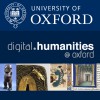Digital Image Corruption - Where It Comes From and How to Detect It
Digital images (photographs) present a significant resource for the Digital Humanities practitioner; individual collections can number in the hundreds of thousands, and can use a variety of encoding methods. These resources can be the result of decades of work and at the very least would be extremely expensive to replace in the event of a disaster. The lecture firstly looks at the methods commonly employed to safeguard an image archive, for example multiple copies across different media types, mirroring. This is followed by an examination of each of these, and identifies issues with each, be they procedural or physical. Next the effects of the issues on image corruption are explored, together with examples of the resultant image corruption on different image encoding methods. Following the observation that most images in an archive are not viewed on a regular basis,methods of detecting corrupted images in an archive are presented, including a visual TIFF image scanner developed at the Ashmolean. Finally, some recommendations are made which will help to ensure the accurate preservation of a digital image archive.




